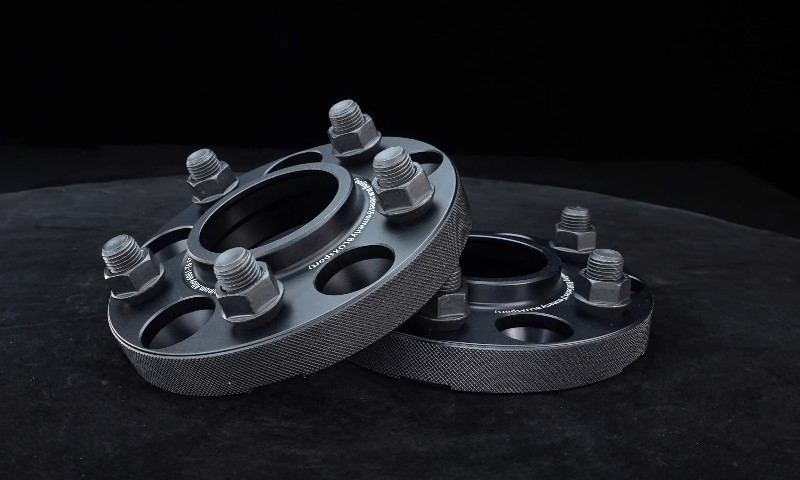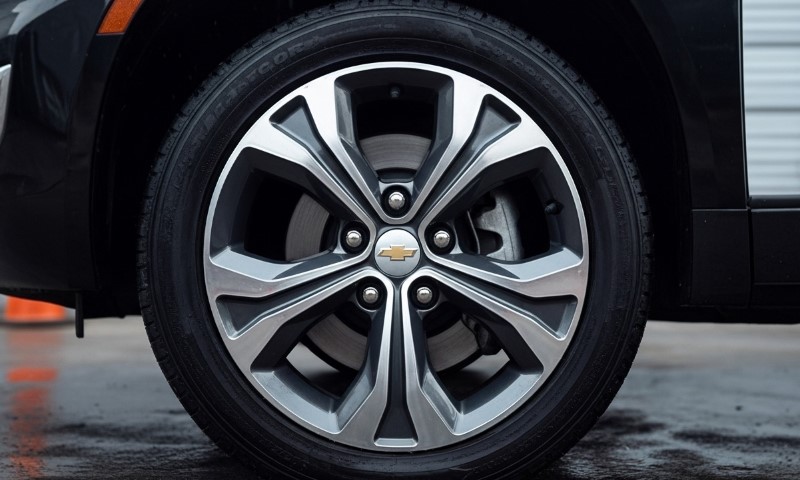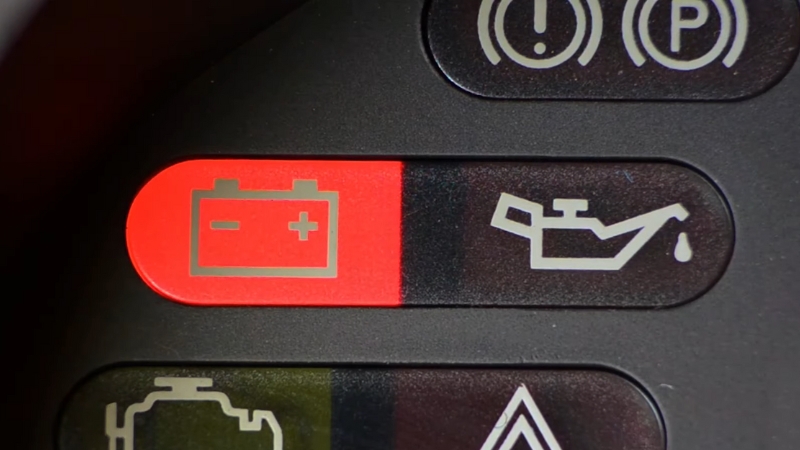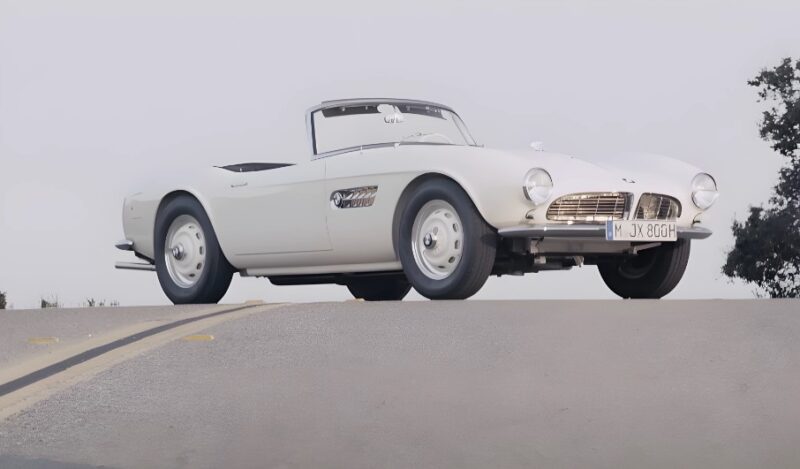
Share Post:
Few cars spark fascination quite like the BMW 507 Roadster. Sleek lines, a thunderous V8, and a production run of just 254 units made it an elusive prize.
In 1958, fate brought one such masterpiece into the hands of Elvis Presley, a king drawn to precision and prestige. Their union turned a German engineering experiment into a rock-and-roll relic.
A tale of revival, fame, and forgotten history unfolds through the 507’s path, from postwar ambition to lipstick-stained panels to a second life under factory lights.
Table of Contents
ToggleThe BMW 507: Germany’s Post-War Dream
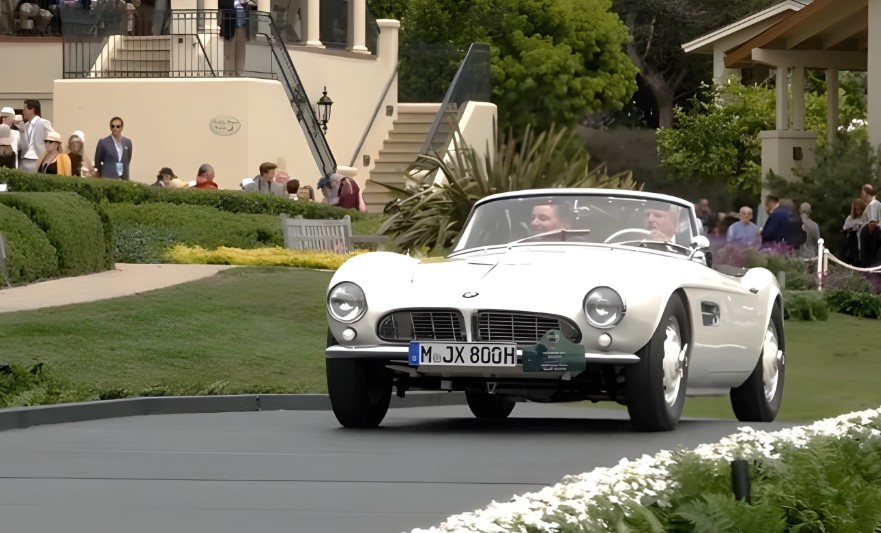
Post-World War II, BMW found itself in crisis. Car production had halted, factories were in ruins, and its reputation had little relevance in the world of post-war consumer automobiles.
Aircraft engines had gone silent. Motorcycle production offered temporary survival, but rebuilding prestige demanded something more daring, more glamorous, and more aspirational. That vision materialized in the form of the BMW 507.
Albrecht von Goertz, a designer with a background in industrial art and a flair for elegance, shaped the 507 as Germany’s answer to the American roadster and convertible craze.
Engineering supported ambition. Under the hood sat a 3.2-liter OHV V8 engine, capable of delivering 150 horsepower.
Acceleration from zero to 60 mph clocked in under 10 seconds, a significant feat in the 1950s. Combined with a top speed nearing 125 mph, the 507 wasn’t just about beauty. Handling matched performance thanks to its advanced suspension systems, giving drivers a feeling of control and excitement.
Several standout technical features defined the 507:
- All-aluminum bodywork for reduced weight and a sleek, sculpted appearance
- 2L OHV V8 engine that generated 150 horsepower and delivered smooth performance
- Independent front suspension and torsion bar rear suspension for superior handling
- 0–60 mph in under 10 seconds and top speed around 125 mph, placing it among the fastest cars of its time
- Front disc brakes and rear drums, offering stopping power suitable for performance driving
Despite all these achievements, price became its greatest obstacle.
With a sticker price around $10,000 in the 1950s, roughly equivalent to over $100,000 in today’s dollars, it priced itself above many luxury offerings, and well beyond its intended mass market.
That high cost wasn’t a result of excess, but rather the craftsmanship and low-volume production that defined each unit.
Elvis Presley and the BMW 507
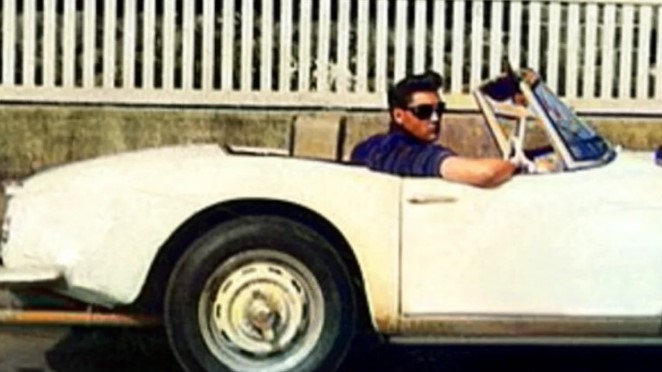
In 1958, a young Elvis Presley arrived in Germany as part of his military service with the U.S. Army. Fame didn’t pause during his deployment.
Fans still followed him, photographers still flashed their bulbs, and headlines still carried his name.
While stationed there, he came across a white BMW 507—a car that had already tasted the race track under Hans Stuck, one of Germany’s celebrated motorsport figures.
What drew him in wasn’t just the shape or performance—it was something that felt personal, elegant, and rare. Chassis number 70079 became his personal machine, and it didn’t take long before the streets of Germany knew its sound.
As Elvis drove through towns and villages, the reaction was electric. People gathered just to catch a glimpse. Some took it a step further. The car often ended up completely smothered in lipstick from admirers planting kisses on the body panels.
Rather than try to wash off the evidence after each outing, Elvis opted for a solution that made headlines of its own: he had the 507 repainted in bright red.
- Original car color: Feather white
- Reason for repaint: To cover lipstick marks from fans
- New color choice: Bright red for easier maintenance and contrast
- Previous owner: Hans Stuck, German racing driver
Life After Elvis: Modifications and Obscurity
By 1960, Elvis Presley’s service in Germany had ended, and the BMW 507 was left behind—a symbol of an era in his life that was closing.
The car soon found a new owner in DJ Tommy Charles, a man more focused on horsepower than heritage. Where Elvis saw elegance, Charles saw a race machine.
Original specifications didn’t last long. The refined aluminum V8 engine, known for its smooth yet responsive performance, was removed and replaced with a Chevrolet small-block V8. Racing needed something louder, meaner, and less concerned with originality.
What followed was a series of dramatic changes:
- The BMW V8 was discarded in favor of a Chevrolet unit, likely chosen for ease of repair and performance output on American tracks.
- Factory seats were swapped out, likely for lighter racing-style versions.
- Badges, trim, and many of the handcrafted details were removed or altered.
- Transmission and suspension systems were likely adapted to accommodate racing needs.
Each new owner added or subtracted something, unaware or unconcerned, with the car’s origins. History was replaced with function.
The purity of design became diluted, buried under layers of aftermarket improvisation and mechanical shortcuts.
Over time, the car passed through different hands, many of whom treated it less as a piece of history and more as a modifiable machine. But cars with stories, especially those tied to icons like Elvis, rarely stay buried forever.
Today, collectors and restoration experts often turn to a dealer in European and American classic cars, known for unearthing everything from neglected barn finds to pristine classics. It’s in such spaces that legends like the 507 are often rediscovered, awaiting a second chance at glory.
Rediscovery and Resurrection
Decades slipped by while the BMW 507 sat dormant in a pumpkin warehouse. Then came a spark of curiosity. Automotive journalist Jackie Jouret caught wind of a rumor—an old 507 possibly tied to Elvis Presley.
It wasn’t much to go on. But leads, fragments, and persistence led her down a trail of records, vintage interviews, and dusty documentation. The breakthrough came when she uncovered the chassis number: 70079.
Confirmation didn’t take long once BMW Group Classic got involved. Experts matched the VIN to the original logbooks, photographs, and delivery records. After decades of silence, the King’s lost roadster had a name, a number, and a date with destiny.
In 2014, the car was flown back to Munich, not as a collector’s bauble, but as a faded canvas in need of revival.
BMW Group Classic didn’t aim for modernization or reinterpretation. Every choice pointed toward authenticity. The goal was to bring the car back to exactly how it looked and felt when it first left the factory in 1957.
Craftsmen approached the job with surgical focus. Restoration wasn’t just about polishing chrome—it was about historical accuracy. Each part told a story.
The Bottom Line
From German ambition to American stardom, into years of silence and finally back into the spotlight, the BMW 507 carried more than horsepower—it carried a story.
Today, it lives again not as a showroom ornament but as proof of meticulous restoration, cultural nostalgia, and mechanical passion. Few artifacts tie together innovation and celebrity quite so completely.
Elvis’s 507 isn’t just a car—it’s a legend once lost, now revived.




